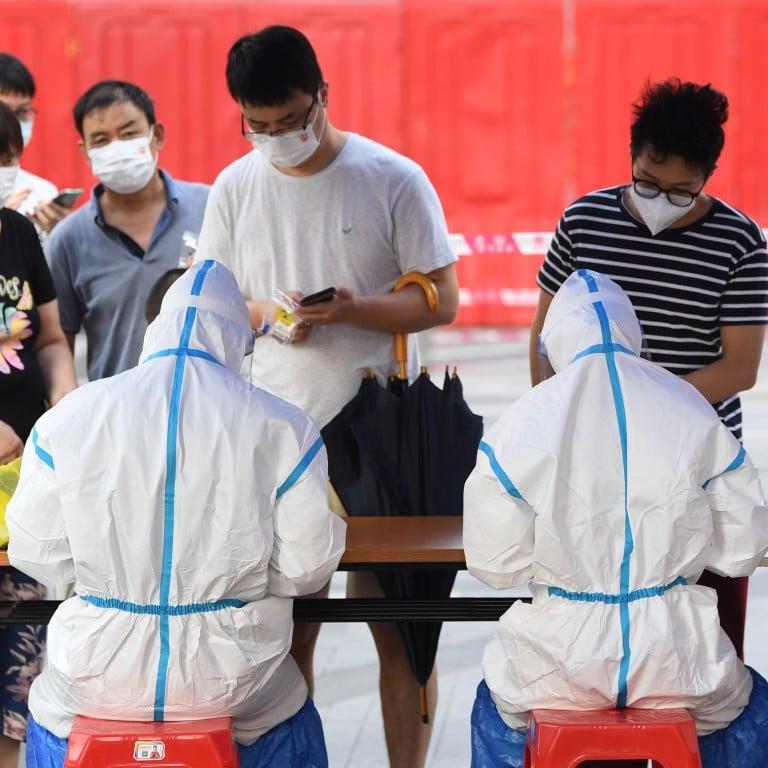
China plans health care system upgrade with focus on infectious disease
- Five-year blueprint calls for more resources for CDCs and centres in big cities to treat large numbers of patients during an outbreak
- It also includes ‘high-quality’ regional and local hospitals and improved facilities for women, children and the elderly
China’s state planning agency has unveiled a plan to build a network of new institutions to upgrade the health care sector over the next five years, with a focus on tackling infectious disease outbreaks.
Improving the capacity to identify and stop infectious diseases – especially respiratory illnesses – from spreading is a top priority in the National Development and Reform Commission’s plan for the health sector to 2025, which was released on Thursday.
The NDRC plan also includes building “high-quality hospitals” at the regional and local levels to take on some of the burden of the overstretched facilities in China’s big cities – a goal that has been around for the past decade but has not yet been achieved.

02:04
China expands two-child policy to three
To tackle infectious diseases, the government will fund upgrades of the Centre for Disease Control and Prevention at the national and provincial levels. Those aims include improving the ability of the national CDC to identify new pathogens quickly and handle outbreaks; provincial CDCs are to be provided with laboratories carrying a biosafety level of at least P3, so that coronaviruses can be handled.
The plan also calls for a number of “national centres to prevent and treat important infectious diseases” to be built in big cities, where large numbers of seriously ill patients could be treated during an outbreak and from where medical teams could be dispatched elsewhere.
Local authorities have been told to set aside resources such as land for these facilities, with the central government to subsidise the projects, capped at 300 million yuan (US$46.4 million) for the national facilities and 200 million yuan (US$30.9 million) for the provincial ones.
The central government will also select and fund outstanding hospitals to become “national medical centres” for research.
Lancet Covid-19 Commission head denies China’s claims of US pressure for lab leak theory
In addition, it will subsidise the building of regional medical centres that the government hopes will form a network to handle outbreaks of serious and complicated diseases in regional areas. Local authorities have been told to provide land and to fund these facilities, and the central government will cap subsidies at 500 million yuan for each regional medical centre.
“From the demand side, our country faces a complicated situation in public health as sudden acute infectious diseases spread quickly and bring great harm to large areas,” the NDRC said, adding that the health care system also had to deal with problems such as chronic disease and the ageing population.
“From the supply side … there are a lot of areas for improvement in the public health system, and the capability to prevent and treat major outbreaks remains weak,” the planning body said.
While China has largely brought the Covid-19 pandemic under control, it has been widely criticised for its early handling of the outbreak, including how it dealt with samples of the new coronavirus and the delay in announcing whether the virus was transmissible between humans.
The NDRC’s five-year plan includes a section on improving health care facilities for women and children to support the new policy to encourage childbirth.
“[The government] will increase quality resources for obstetrics and paediatrics, and improve services for prenatal and neonatal care,” the planning body said, adding that this was part of efforts toward “long-term balanced population development” and to meet the needs of an “appropriate” birth rate.
Beijing also plans to pour more resources into traditional Chinese medicine, another area Xi wants developed. The plan calls for 30 TCM innovation and research centres to be built, 35 facilities where TCM would be used during a disease outbreak, and 50 “flagship” hospitals where the use of TCM and Western medicine would be integrated.

